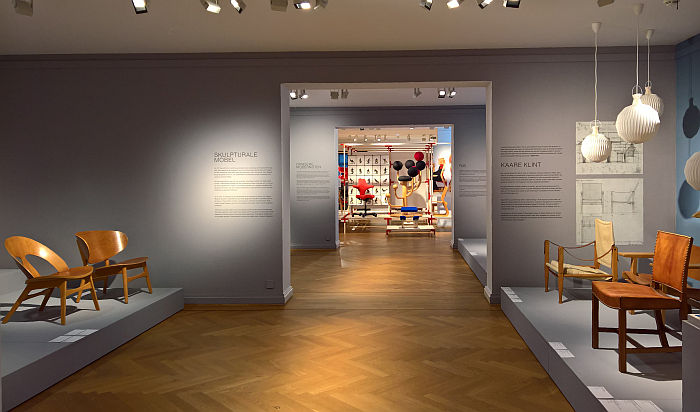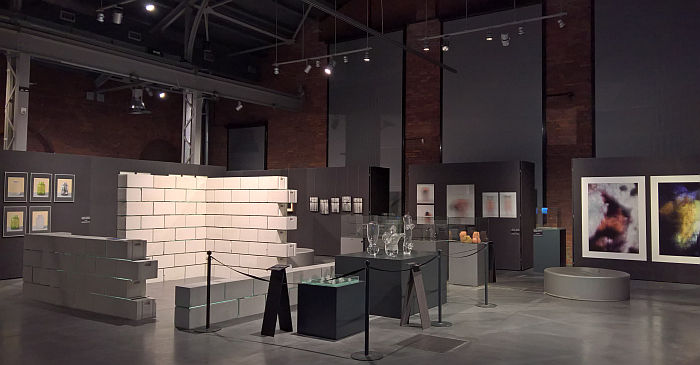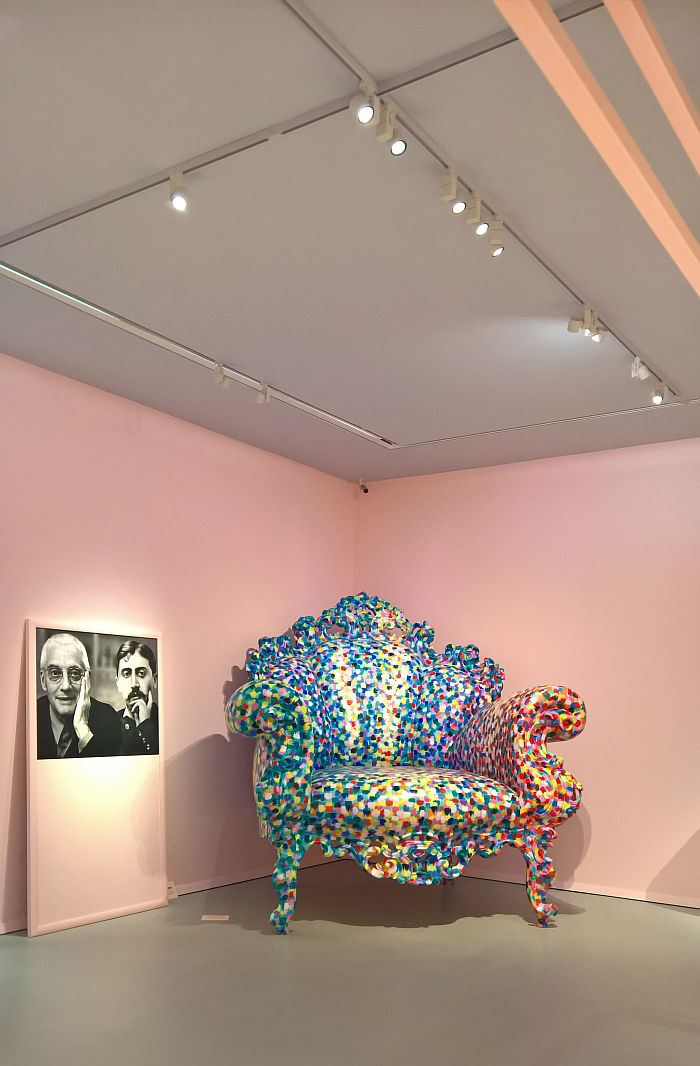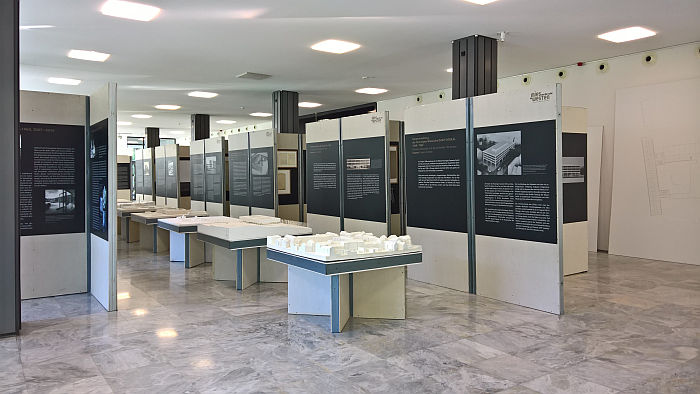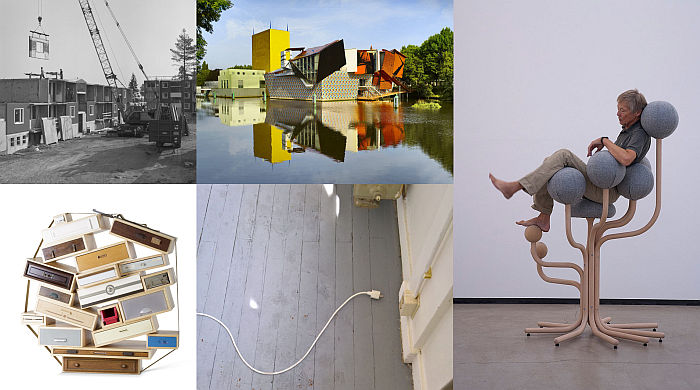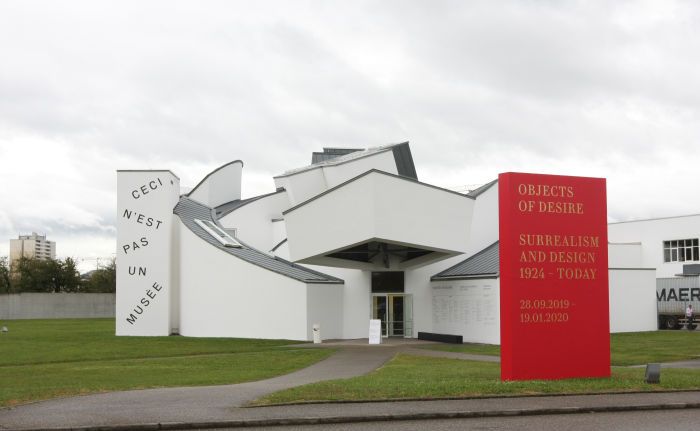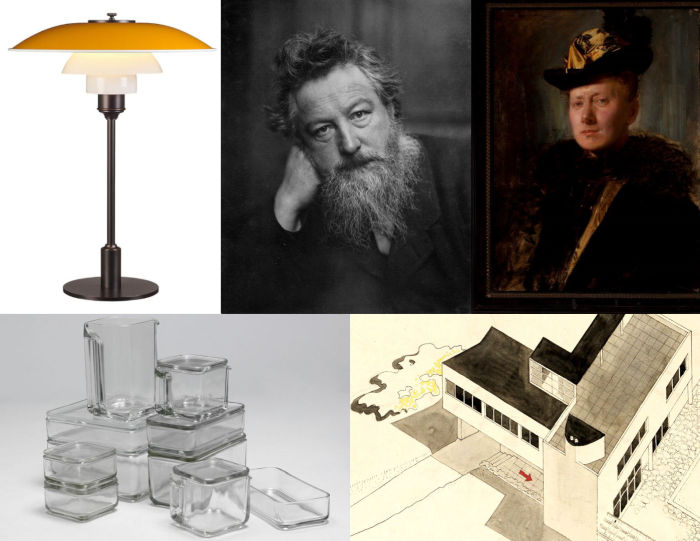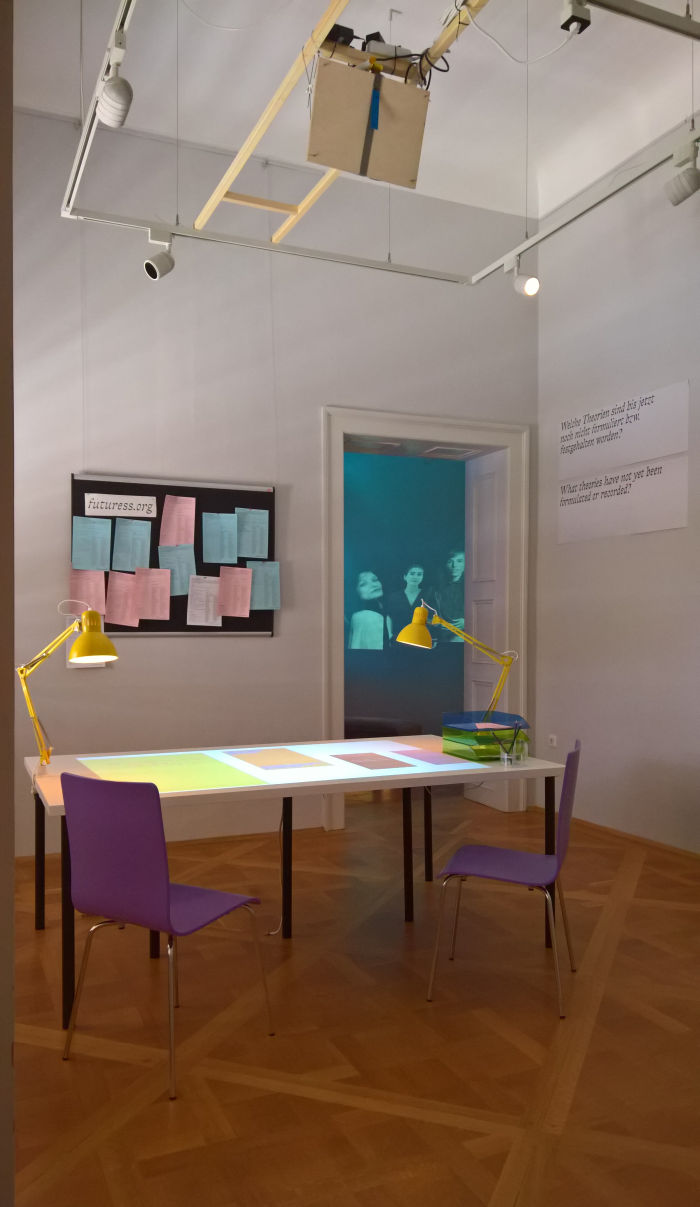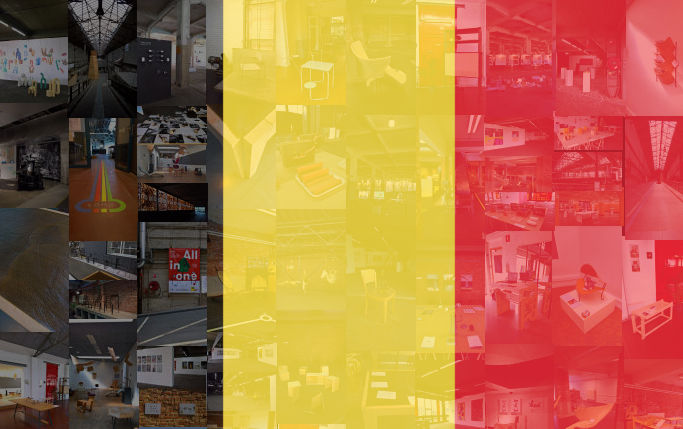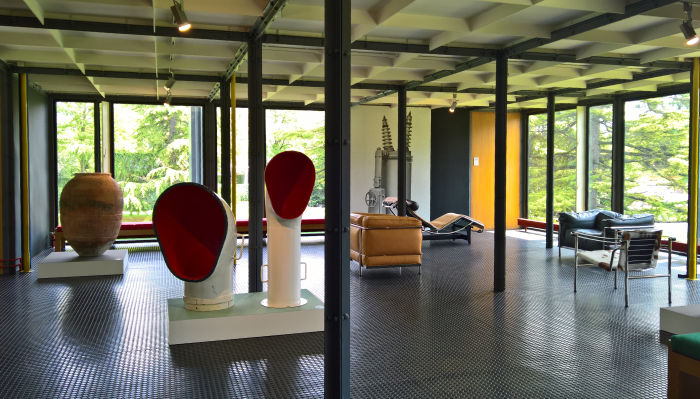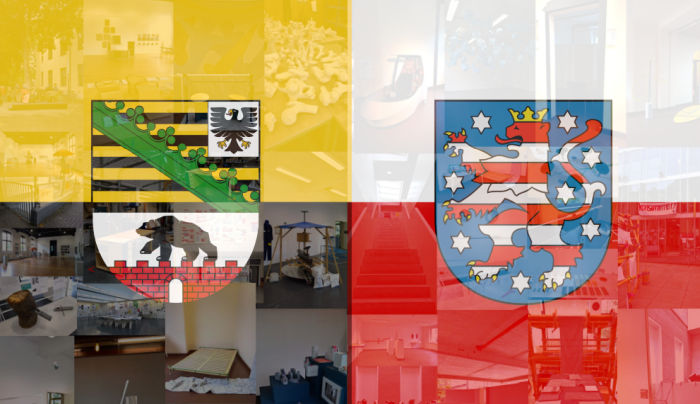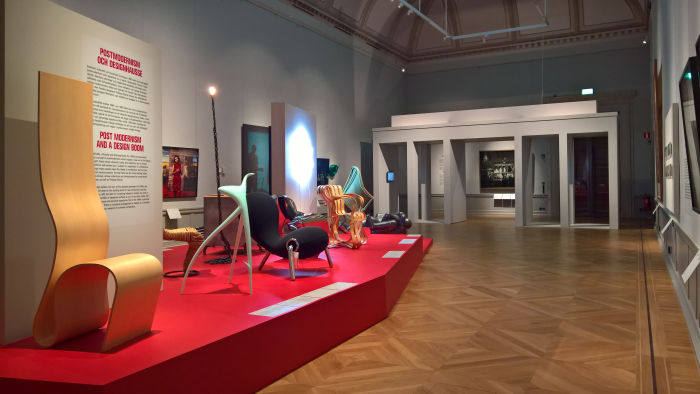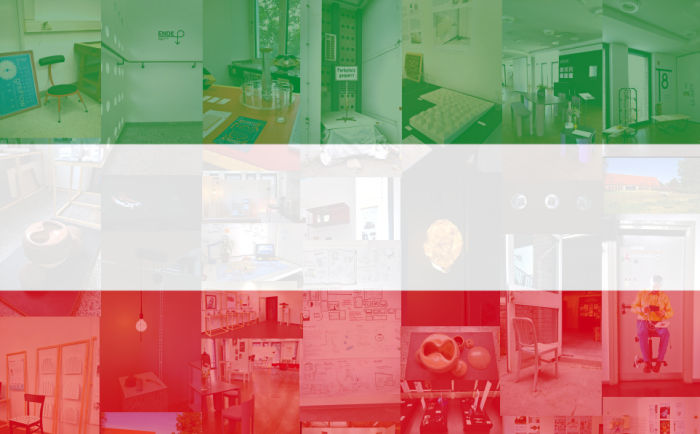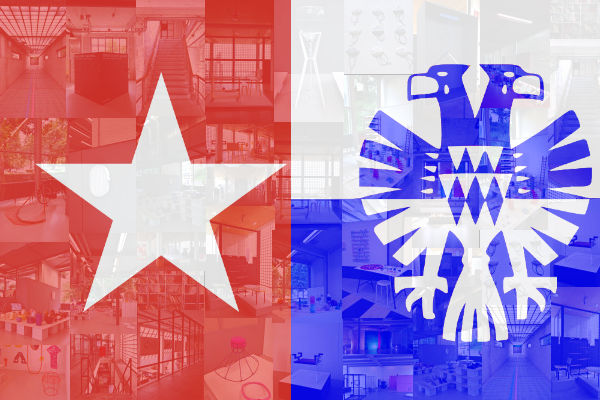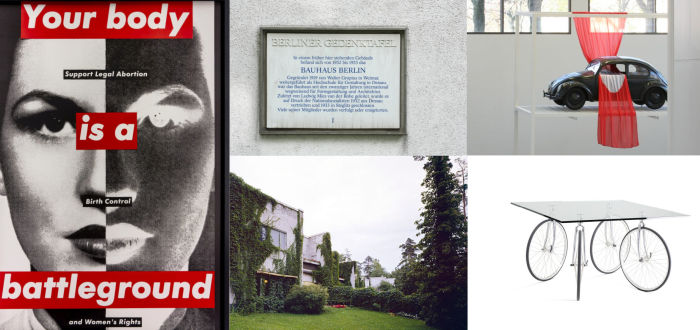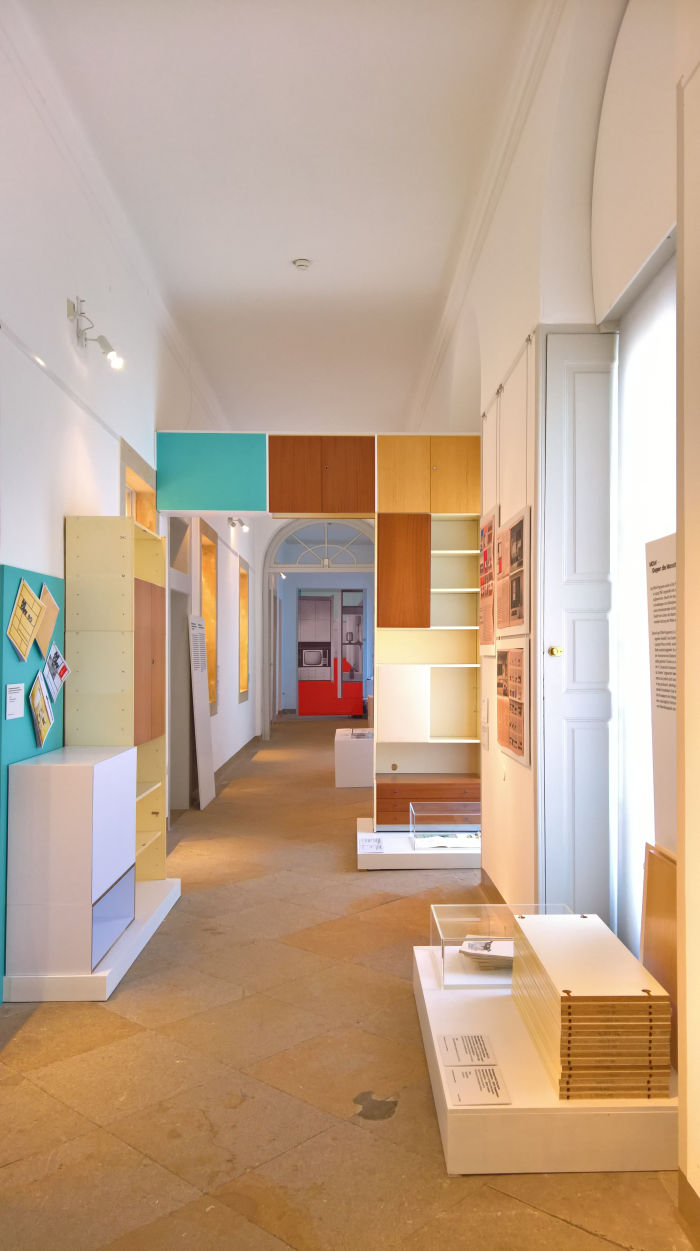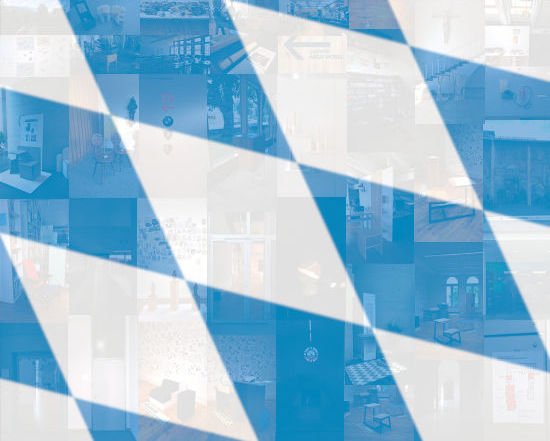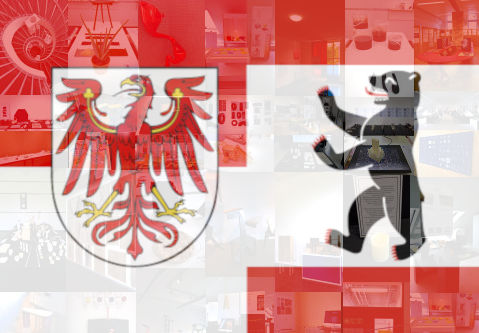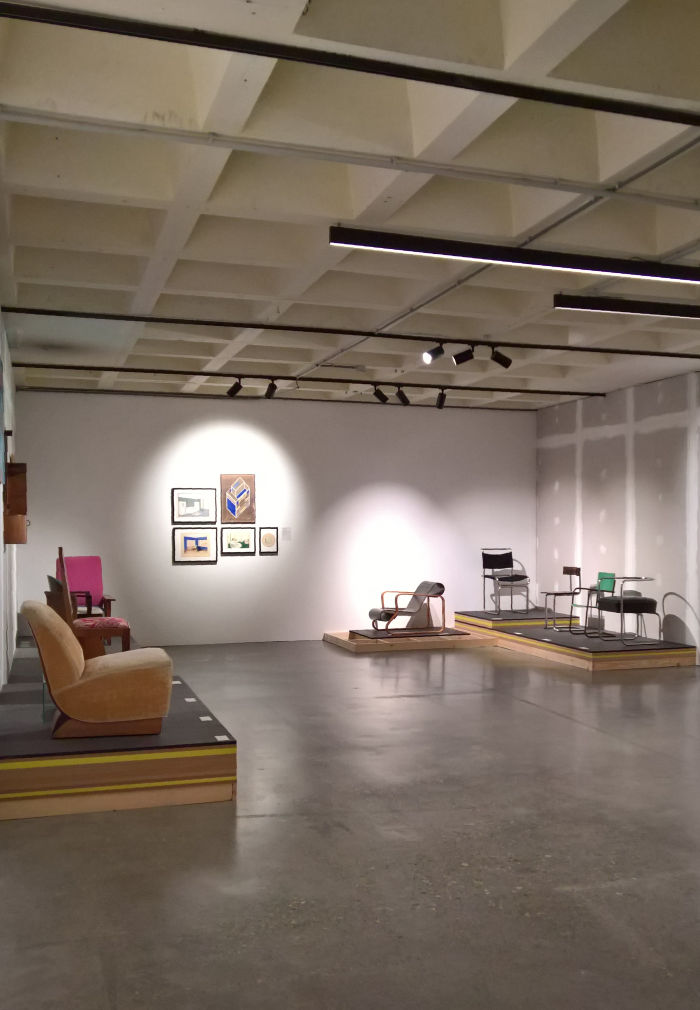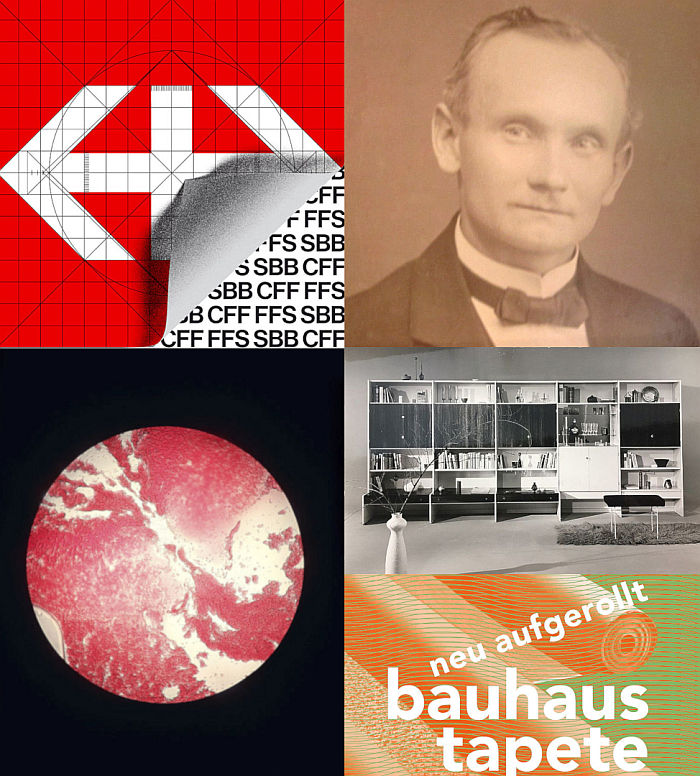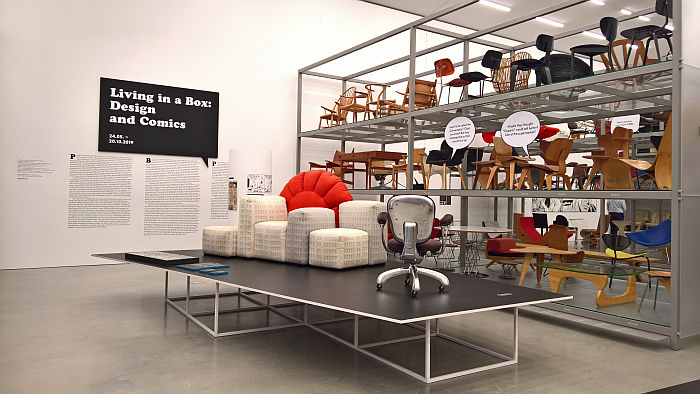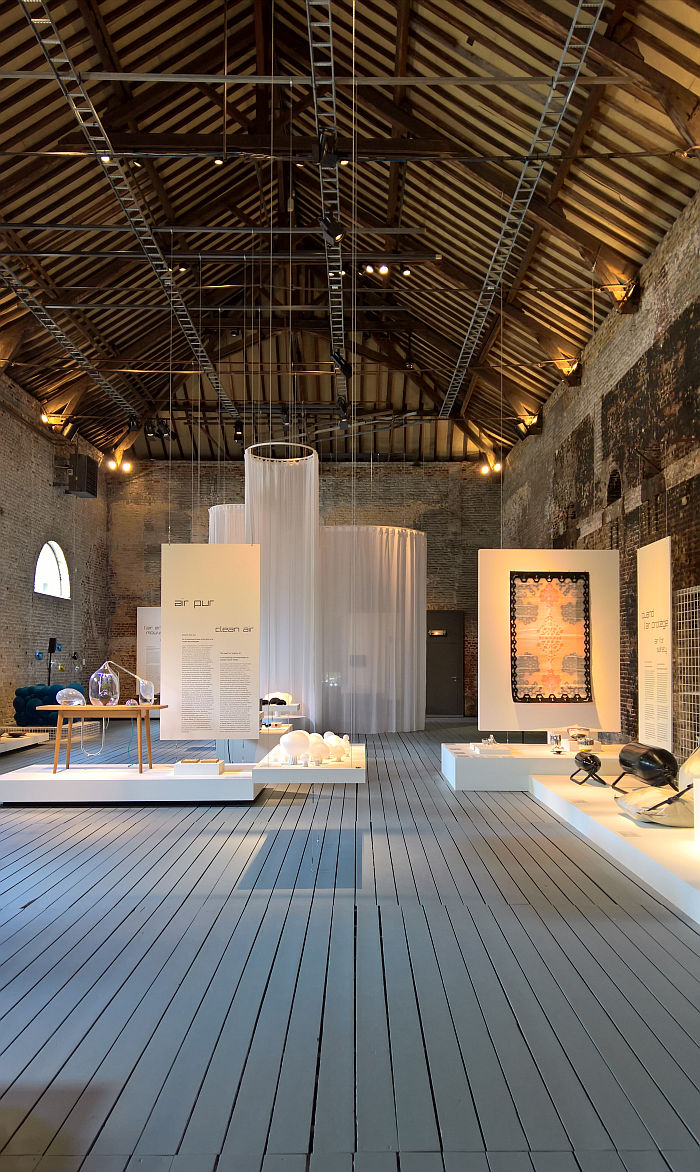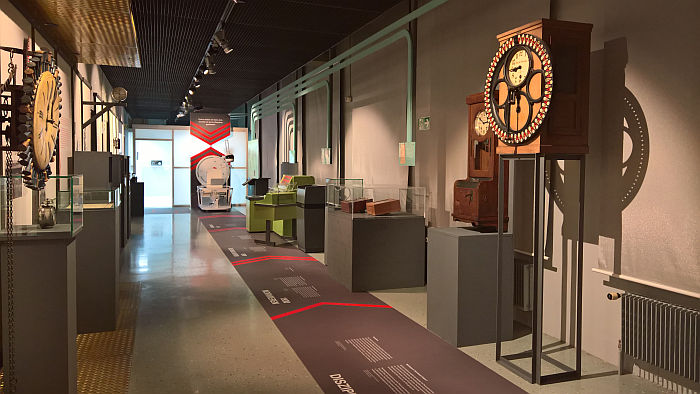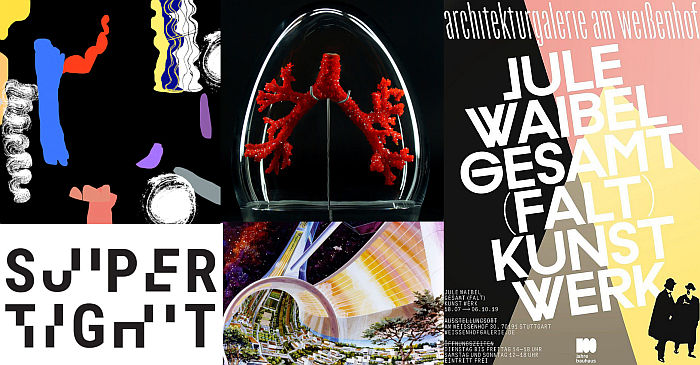Category: Exhibitions and Shows
Nordic Design. The Response to the Bauhaus @ The Bröhan Museum, Berlin
Having started this Bauhaus Weimar centenary year by exploring the path from Arts and Crafts to Bauhaus, the Bröhan Museum Berlin end this Bauhaus Weimar centenary year by exploring the path from Bauhaus to Arts and Crafts Scandinavia.
Or more accurately put, by exploring Nordic Design. The Response to the Bauhaus.
Ich bin ganz von Glas. Marianne Brandt and the Art of Glass Today @ The Sächsische Industriemuseum, Chemnitz
László Moholy-Nagy may have given Marianne Brandt “mettle for metal”, and metal may be the material with which she is most readily and popularly associated; however, as she wrote in 1922, “Ich bin ganz von Glas”….. I am entirely glass.
Fragile? Transparent? Opaque? Metamorphic? Refractive? Sparkling?
For its 7th edition the triennial International Marianne Brandt Contest sought projects exploring glass in all its interpretations, properties and essences; the 60 nominated projects being presented alongside a cabinet showcase devoted to Marianne Brandt in the exhibtion Ich bin ganz von Glas. Marianne Brandt and the Art of Glass Today at the Sächsische Industriemuseum Chemnitz.
Mondo Mendini @ The Groninger Museum, Groningen
Our Mondo Contemporaneo is a very unhappy, unsatisfying, unrewarding, dark, place.
Should we perhaps all consider a move to the colourful, dynamic reverie of Mondo Mendini?
At the Groninger Museum you can undertake a trial visit……………
Mies im Westen @ Landeshaus des LVR, Cologne
While Ludwig Mies van der Rohe is arguably best known for the works he realised in the (mid-)west USA, the works he realised in west(ern) Germany are no less relevant or important for understanding the man, his work and his legacy.
Summer 2019 saw the western German State of Nordrhein-Westfalen host three Mies van der Rohe exhibitions, one each in, and devoted to Mies’s works in, Aachen, Krefeld and Essen. Three exhibitions now united in one in Cologne, and which as a unified trio not only provides for a very concise overview of the work of Ludwig Mies van der Rohe in Nordrhein-Westfalen, but also of both the development of Mies van der Rohe as an architect and, in many regards, the wider developments in understandings of architecture and design in the course of the 20th century.
5 New Architecture & Design Exhibitions for October 2019
While it is important, and relevant, that the centenary of the opening of Bauhaus Weimar is used to delve a little deeper into the (hi)story of both the institution and inter-War Modernism, design and architecture is more than Bauhaus.
Thus following on from our October Bauhaus/inter-War Modernism focussed new exhibition recommendations, five more general, if anything but humdrum, architecture and design exhibitions opening in October 2019 in Groningen, Frankfurt, New York, Stockholm and Weil am Rhein…..
Objects of Desire. Surrealism and Design 1924 – Today @ The Vitra Design Museum, Weil am Rhein
“After you have settled yourself in a place as favorable as possible to the concentration of your mind upon itself, have writing materials brought to you”, so begins Secrets of the Magical Surrealist Art – Written surrealist composition, part of André Breton’s 1924 Surrealist Manifesto, “Put yourself in as passive, or receptive, a state of mind as you can. Forget about your genius, your talents, and the talents of everyone else. Keep reminding yourself that literature is one of the saddest roads that leads to everything. Write quickly, without any preconceived subject, fast enough so that you will not remember what you’re writing and be tempted to reread what you have written. The first sentence will come spontaneously, so compelling is the truth that with every passing second there is a sentence unknown to our consciousness which is only crying out to be heard.”1
Ready? Here goes, a Surrealist, automatic, blog post……………….
….no, not really.
Although we did consider it, as in genuinely, seriously, hired staff to bring us our writing materials and everything; but we did and do have a preconceived subject: the exhibition Objects of Desire. Surrealism and Design 1924 – Today at the Vitra Design Museum.
And so with apologies to André Breton and his Surrealist cohorts, we’ll consider their work and their influence on/interaction with design at our accustomed tempo, and with regular re-readings, re-formulations and very conscious re-framings……
5 New Architecture & Design Exhibitions for October 2019 – Bauhaus Special
More or less……
….. Back in May 2019 the sheer number of new architecture and design exhibitions opening globally allowed us to produce two recommendations lists: one featuring exhibitions with a strong Bauhaus/inter-War Modernism focus, and one more general, less focussed.
Spring forward five months and with the global museum community now fully awoken from their summer slumber we once again find ourselves with a cornucopia of new exhibitions that invites two lists. An invitation we would consider rude to decline.
In May we started with the more general exhibitions and so this time it seemed only fair to begin with new exhibitions in Berlin, Weimar, Cottbus, London W1 and London E17 that explore Bauhaus and inter-War modernism in a relatively wide sense, but then the wider the sense, the more detailed the understanding….
Add to the Cake: Transforming the roles of female practitioners @ Kunstgewerbemuseum Dresden
It is highly unlikely any 18th century banquet in Dresden’s Schloss Pillnitz would have been graced by a cake that came close to matching the Baroque grandeur of the location, certainly no cake that would have had a richness, plenitude or vitality to match; cake as it existed in the 1700s being a much flatter, breadier, monotone, delight, one which we today would barely recognise as cake, but which then was understood as cake, the whole cake and nothing but cake.
Then additions were made to the cake……
#campustour 2019: Belgium
Belgium is uncharted territory for us. Not literately, we’re in Belgium fairly frequently. Indeed so frequently that we are often asked why we don’t move to Belgium. Because we’ve been to Belgium, we reply (JOKE!!))
But Belgium is uncharted territory in terms of our annual #campustour: the design school summer showcases in Belgium tending as they do to run parallel to those in London, and that in previous years we’ve had good reason to be in London at that time, we’ve, logically, not been in Belgium. This year ’twas different, we had absolutely no reason to be in London and every reason to be in Belgium, which, yes, does sound like a metaphor. Isn’t, but does sound like one…… And so took the opportunity to visit a trio of Belgian design schools, technically a quartet, but legally a trio……
Mon univers @ Pavillon Le Corbusier, Zürich
“This house is a work by Le Corbusier” announces a yellow and white sign on the edge of the Zürichhorn park, “I commissioned it in his honour, and as a location from which to spread his ideas amongst a wider public”
With the exhibition Mon univers the Pavillon Le Corbusier Zürich attempt to do just that via an exploration of the Swiss architect, artist, designer, author, et al, through a very specific filter: that which he collected.
#campustour 2019: Germany – Sachsen-Anhalt & Thüringen
It’s almost impossible to reflect on design education without reflecting on Bauhaus. Especially this year. And especially when a tour of design school summer exhibitions takes you to Sachsen-Anhalt and Thüringen, to those (contemporary) German States where for 100 years Bauhaus both began and found its de facto end.
And while there will be time in coming posts for those reflections on the Gropius school and the developments of the century past, the focus of our 2019 #campustour visits to Sachsen-Anhalt and Thüringen, specifically Halle and Weimar, is and was the contemporary students and the work realised in the year past.
1989 – Culture and Politics @ The National Museum Stockholm
The Chinese government warning pro-democracy demonstrators to end their street protests. Central Americans risking their lives, and dodging border guards and fences, to cross into America in search of the, much vaunted, American Dream. A dogmatic right wing English Conservative government showing their contempt for the people of Scotland.
Thankfully, the world has moved on since 1989……
#campustour 2019: Germany – Nordrhein-Westfalen
With its abundance of forests, earths, coals and waterways the contemporary Nordrhein-Westfalen has long been an important centre of production, industry, trade and by extrapolation design and creativity; at various stages in history important impulses and innovation radiating from communities such as Aachen, Hagen, Krefeld, Essen, Soest or Düsseldorf…….
………and since the end of the 19th century from the myriad of art, applied art, architecture and design schools dotted throughout the region: a myriad from which logistical realities, and some most unfortunate timetabling, regrettably, meant that the 2019 smow blog #campustour only visited two. If two that represent very different approaches to design education…….
#campustour 2019: Netherlands – Maastricht & Arnhem
Small as the Netherlands may be in the global jigsaw, it has been the source of numerous significant impulses in terms of architecture and design, numerous significant impulses which for reasons of brevity we’ll reduce to the Dutch gable as a defining feature of baroque architecture, to De Stijl as leading protagonists of the early 20th century European avant-garde, and to that late 20th century Dutch avant-garde that developed in the course of the 1990s and which did so much to force an evolution in understandings of design, including allowing for an increasing popular acceptance of conceptual design and thereby the understanding that design isn’t necessarily the object but how one gets there and what we (can) collectively learn from the journey.
How the coming generation of Dutch, and in the Netherlands trained non-Dutch, designers are making their way, what they’ve learned thus far from their journey and why they are undertaking the journey, were among the motivations for taking our 2019 #campustour to the Netherlands.
Small as the Netherlands may be in the global jigsaw, our visits to its design schools was the source of more than could comfortably be accommodated in one post, and so we’ve split it into two, starting in Maastricht and Arnhem…….
5 New Architecture & Design Exhibitions for September 2019
Whereas in the natural world spring ushers in new life but once a year, in the design museum world re-awakenings are biannual: a spring spring as curators awake from their winter hibernation and an autumn spring as they awake from their summer dormancy. Both bringing forth not only the promise of growth, energy, of a new esprit, of new experiences, new sensations, but confirming the eternal nature of existence, that we are but a moment on an endless spiralling continuum…….
Our five new stimulations for September 2019 can be found in Berlin, Helsinki, Weil am Rhein, Stockholm and ‘s-Hertogenbosch…….
Rudolf Horn – Wohnen als offenes System @ the Kunstgewerbemuseum Dresden
In 1968 the East German designer Rudolf Horn opined that “the changed tenor of industrial production in the socialist society, in relation to its task of satisfying cultural needs on a mass scale, raises the question of how despite mass production the consumer can realise an individual [domestic] environment, and in addition forces us to consider the problem of how the cultured personality can creatively contribute to the design of their immediate surroundings.”1
How indeed….?
It was, however, a largely rhetorical question, because, and as the exhibition Rudolf Horn – Wohnen als offenes System at the Kunstgewerbemuseum Dresden explains, in 1967 Rudolf Horn had already formulated an answer, or perhaps more accurately put, in 1967 formulated a framework via which to allow each and everyone of us to approach our own answer…..
#campustour 2019: Germany – Bavaria
If the recent history of Germany is one of East and West, the longer history is one of North and South; a history which, and simplifying to the point of falsehood, saw the rivalry and conflict between the Hanseatic League and the traders of the southern states become a rivalry and conflict between Prussia and the realms of Baden, Württemberg, Hessen and Bavaria: the latter being the most reluctant to ratify the 1870 November Treaties and join the new Deutsches Reich. A reluctance expressed not only by the then Bavarian parliament’s protracted deliberations on, and initial rejection of, the Treaties, but Bavaria’s then King, Ludwig II, he of the fairytale castles, absence from the formal proclamation of the Kaiserreich in January 1871.
Yet despite Bavaria’s long, deep, and (arguably) continuing, resistance and hostility to the union, it is Weißbier, Lederhosen and FC Bayern, and fairytale castles, which stand representative for many a non-German’s understanding of German identity.
Conversely, while Bavaria has contributed much to the development of contemporary design in Germany, not least through the efforts of, and amongst many others, the late 19th/early 20th century Vereinigte Werkstätten für Kunst im Handwerk, Die Neue Sammlung as one of the oldest and largest dedicated design museums, the Munich born and based designer Konstantin Grcic or Stuttgart born but Chiemgau based design publisher Nils Holger Moormann, the popular understanding of “Designed in Germany” lies outwith the Freistaat, in the realms of gute Form, largely developed in Ulm and arguably most popularly understood through Braun; in Stuttgart’s Porsche or Wolfsburg’s Volkswagen; or, and this year of all years, by Bauhaus, an institution which as we noted in context of our 2019 smow Song Contest coverage, was very, very Prussian in its make up, students from Bavaria being outnumbered by those from Mars. More or less.
But what can Bavaria’s design schools contribute to altering such a position? To raising the profile of Bavarian design? We can’t offer any concrete prognosis, or at least not here, logistic realities meaning that we only visited two Bavarian design schools, technically three but we’ll get to that, at length; however, from the two (three) we did visit……
#campustour 2019: Germany – Berlin & Brandenburg
Partly for reasons of its size, and partly on account of the way the then nations of the contemporary Germany responded to the challenges and realities of late 19th/early 20th century industrialisation, Germany is home to a truly outrageous number of architecture and design schools, certainly more than it would be logical, prudent or congenial to pack into one post.
And so to save your nerves, and our fingers, we’ll present the German leg of our 2019 #campustour via a series of regional postings, starting in and around the German capital.
SPACES. Interior design evolution @ ADAM Brussels Design Museum, Brussels
The Hungarian composer Béla Bartók was (reportedly) the opinion that, “in art there are only fast or slow developments. Essentially it is a matter of evolution, not revolution.”
A position one, arguably, could apply to all expressions of contemporary culture and society.
And a position the exhibition SPACES. Interior design evolution at the ADAM Brussels Design Museum explores in context of domestic interiors.
#campustour 2019: Sweden
For Jazzy Jeff and the Fresh Prince Summertime may very well be a “Time to sit back and unwind”, for us Summertime is when our year finally, finally, gets going.
While others spend the long hot days of summer on the beach, in the mountains, riding around in their Jeep, their Benzos, Nissan or eating pizza at Lorenzos, we’re to be found either riding backwards in trains, our eyes fixed firmly on the past as we race into the future, terrified that a metaphor is becoming an omen, or wandering the corridors, ateliers and workshops of European design schools, considering and reflecting on not only the students’ semester and graduation projects, but contemporary European design education, the positions of the coming generation of designers, and questioning if the world, the society, laid out before us is one we we want to be part off? Weeks of travel, reflection and existential anguish sustained by no more than our endless curiosity, more water than we consume the rest of the year and the promise of a (near) daily falafel.
That’s our “new definition of summer madness”
Drrrums please…….
5 New Architecture & Design Exhibitions for August 2019
According to our old friend Roget possible synonyms for “August” include great, noble, impressive or worshipful.
We can’t promise the following quintet of exhibitions will exactly meet such qualities; however, they promise to be anything but frivolous, undignified or flighty explorations of their subject, and therefore certainly should be tending to the August in August 2019…….
Living in a Box. Design and Comics @ the Vitra Design Museum Schaudepot, Weil am Rhein
In these dispatches we once doubted the prevalence of designer furniture in comics, noting and acknowledging the regular appearance of popular furniture designs in other visual media, we, off-handedly, opined, “… Designer furniture in a comic?”
Elegantly proving us very, very wrong the Vitra Design Museum’s exhibition Living in a Box. Design and Comics not only explores the use and depiction of designer furniture and lighting in comics, but also considers how comics have contributed to and influenced furniture and lighting design.
Design on Air at the CID – centre d’innovation et de design au Grand-Hornu, Hornu
According to the Greek philosopher Anaximenes of Miletus, air is the source of everything.
And whereas in the intervening 2500 years we have come to better understand the true nature, character and properties of air, as the exhibtion Design on Air at the Centre d’innovation et de design Grand-Hornu illustrates, air remains a very potent, stimulating, and protean creative force.
Time, Freedom and Control – The Legacy of Johannes Bürk @ the Uhrenindustriemuseum Villingen-Schwenningen
On May 14th 2019 the European Court of Justice ruled that all employers are required “to set up an objective, reliable and accessible system enabling the duration of time worked each day by each worker to be measured.” 1
On July 15th 1855 Johannes Bürk was granted a patent for just such a system.
A system which, as the Uhrenindustriemuseum Villingen-Schwenningen’s exhibition Time, Freedom and Control – The Legacy of Johannes Bürk explains, paved the way, certainly in spirit, for many of the developments in terms of recording, monitoring and managing time which not only developed in the course of the industrialisation of the late 19th/early 20th century, but were imperative to industrialisation’s success.
And which continue to inform and define our post-industrial society.
5 New Architecture & Design Exhibitions for July 2019
July was once known as Quintilis, and was the fifth month of the Roman calender. The fifth of ten. “Winter” being but an ill-defined cold and dark period between December and March.
And sensible as such as an arrangement sounds, and much as we could live with such an arrangement today, with the rise of the Roman Republic the wise decision was made to divide winter into January and February.
Wise not least because it means our contemporary year has 12 months: and thus two extra months in which to enjoy even more architecture and design exhibitions, and thereby to allow us all to even better understand the world which surrounds us.
Our quintet for Quintilis 2019 can be found in Stuttgart, San Francisco, Weil am Rhein, Melbourne and Dresden……
